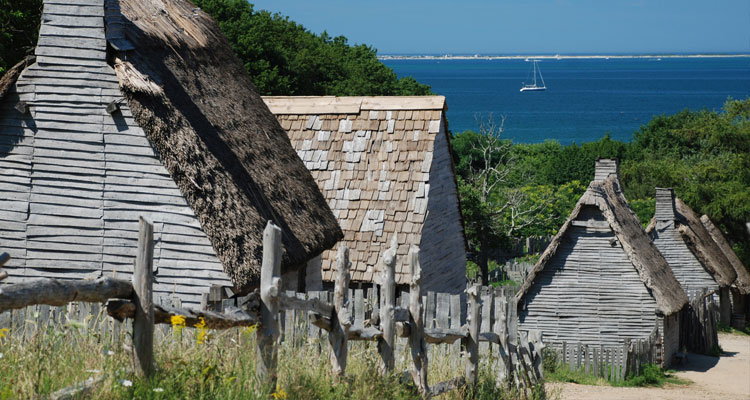When my wife and I brought our kids to visit Plimoth Plantation, a loving recreation of the Pilgrims’ settlement, circa 1627, it was a chilly, grey fall day.
As we walked about the village we visited artisans, homemakers, and shop owners. They dressed in period clothes and spoke in old-fashioned ways. It was so realistic, you could imagine being thrust back nearly four centuries, visiting neighbors, getting a horseshoe replaced, making grain, and living in a very different time.
But if you can’t go to Plimoth Plantation in person, you can get a taste in a virtual field trip for all ages. As we approach Thanksgiving, it’s well worth it to better understand the life and times of these hardy and determined settlers, ancestors to our nation.
Two Excellent Videos
A good place to start is this introductory video that tells how the Pilgrims first came over on the Mayflower. In the video, you’ll meet a militia man who guards the settlement, and spend time at a home in the village. You’ll find out how a couple built their house, how they kept their herb and vegetable garden, cooked their meals, and managed to live in such a small space.
[embedvideo id=”trQPPEERPk0″ website=”youtube”]
An excellent companion video features the home site of the Wampanoag, who had lived in the area for more than 10,000 years before the Pilgrims. You’ll go on a tour of their bark home and see the fascinating, controlled burning technique they used to make canoes. The Wampanoag taught the Pilgrims their planting, hunting, and fishing techniques. For example, the natives used fish as fertilizer for corn. They also made garments out of fur: when worn on the inside, it provided warmth; but in the rain, they’d turn the fur to the outside to shed water.
[embedvideo id=”14oxm47NN_Q” website=”youtube”]
Some Fun Activities
I roamed around to find some other things you might enjoy:
- Want to talk like a Pilgrim? This interactive audio feature translates some old-fashioned words and sayings. Learn how they said “backwards” which was “arsy-varsy,” and “cat” which was “mouser.”
- How about Pilgrim and Wampanoag recipes? They’re here, too. The Nasaump looked good to me – a Wampanoag porridge made of dried corn, berries, and nuts. And the Pilgrim’s Stewed Pompion (pumpkin) is one of the oldest written recipes from that time.
- Finally, two games look pretty easy to make and fun to play. For the Wampanoag Toss and Catch Game, all you need is some twine, a piece of vine, and a stick. And the two-player Pilgrim Fox and Geese Game is a little like checkers.
Of course there’s more online, such as stories and short history pieces for kids, so by all means explore. It’s all a great way to gain a greater appreciation for our heritage.




































